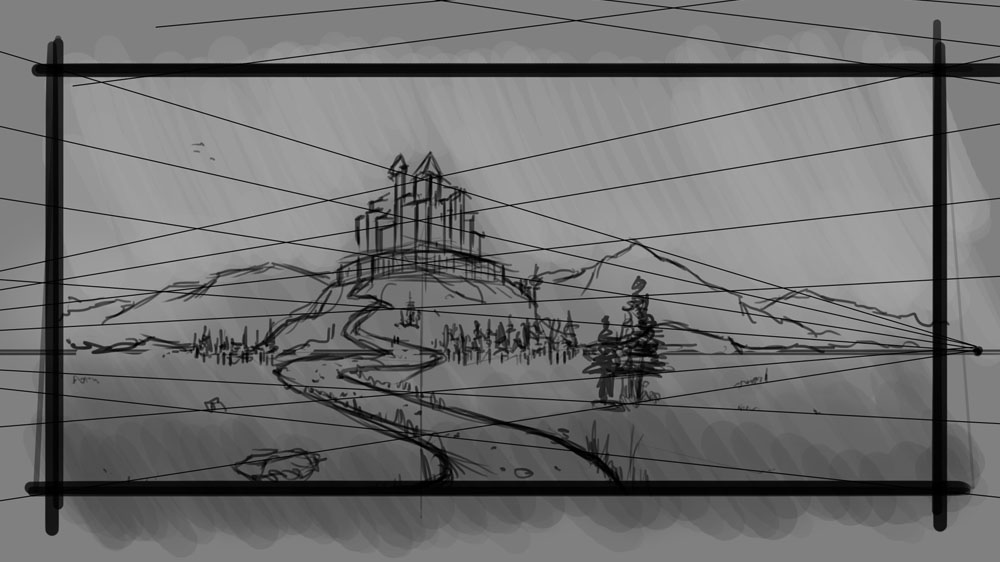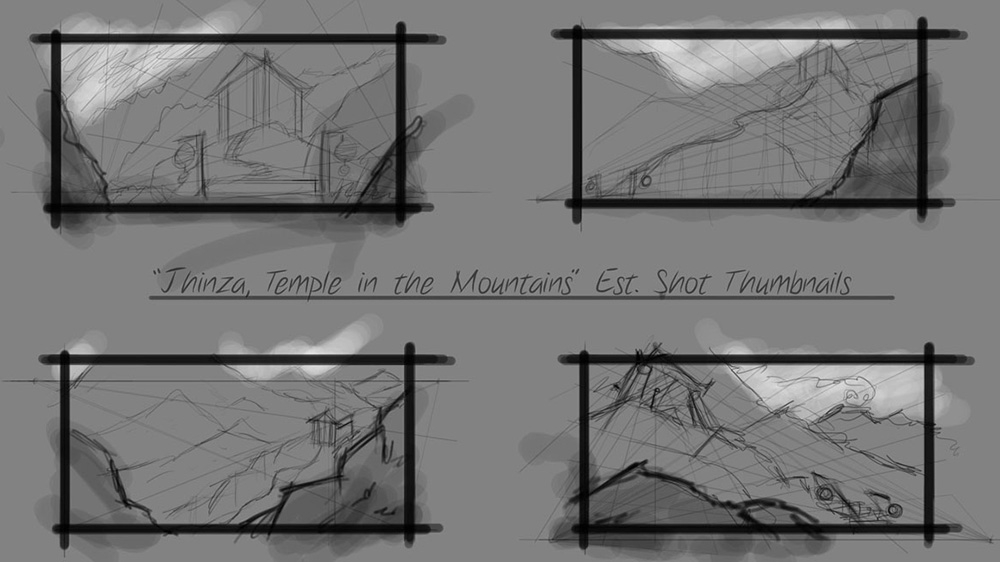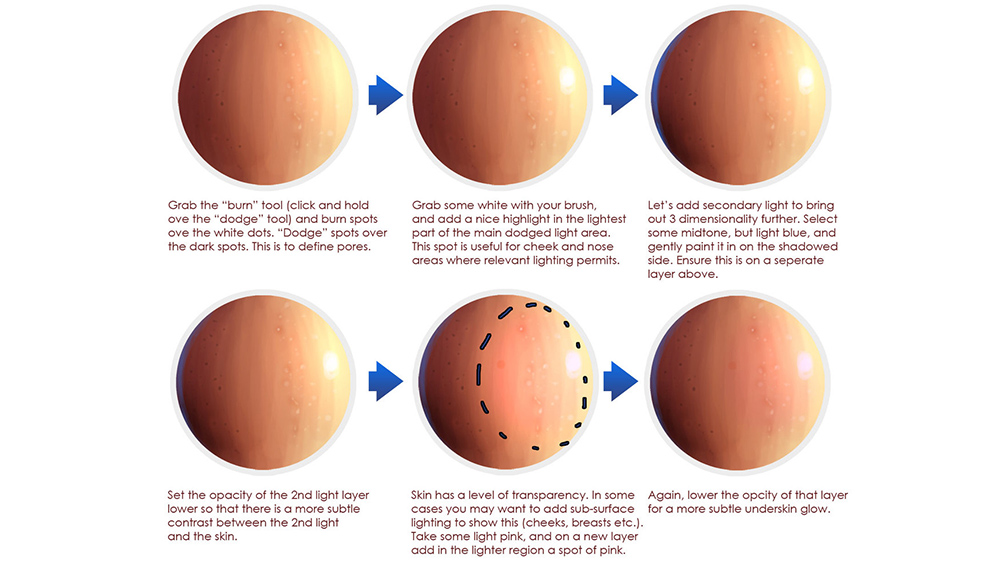- What is Entertainment Design?
- The Production Pipeline
- How Production Artwork is used
- Why one would study Art and Design for Production and Entertainment
Entertainment Design is the pre-production process of visualizing creative assets for the use in a production, usually in films and video Games, and any other entertainment media. It encompasses creating visual artworks, illustrations and designs that explore and inform what worlds, places, characters, creatures, scenes, machines, theme park rides and more look like, in the production.
Entertainment Design is a pre-production process, that is, it is a small, yet very important part of the overall production – it is the visual design phase in a production timeline. In the film industry, it is known as “Conceptual Pre-visualization” and in the games industry it may be called “Conceptual Design”, “Concept Art” or simply “Art Production”.
In films, games, graphic novels, comics and other visual media, most productions generally begin with a brief, or treatment of the idea. Films then move onto scripts, and games move onto production plans. The very next stage is usually pre-visualization, the visual “bread and butter” of any production. This is what we teach.
In this stage, skilled artists draw, sketch and paint the various elements of the production, often producing many versions and a variety of conceptual designs. From sketches of characters, to paintings of scenes in a movie, to the functioning of a futuristic space craft, these designs are used to help visualise and inform the final look and feel of the production. The directors and producers of films, games and media use all of these visual assets in many parts of the production, and often commission thousands of artworks in order to create visually unique, and stunning, productions. Thus, the pivotal nature of Production Design in modern media and entertainment cannot be denied. It is the visual foundation, the basis, for any modern media production.
First, let’s take an example of a fantasy adventure game in development. Once the artist has visualised a game element, in this case, a warrior character, the final approved design will move to the 3D modeller. The 3D modeller will use the design as a basis to create a 3D version of the sketch or painting. The colouring, clothing and features in the initial artist’s rendering will inform the way a Texture Artist adds texture and colour to the 3D model, such as skin tones, and cloth textures. Once the model is done, a rigger will add a skeletal structure to the model, that is used to allow another person, the Animator, to create all the movement and animations for that character. The initial design will often inform the nature and personality of the character, and show weight, height and size, all things that inform the 3D model, the rigging setup, the texturing, and the way the character is ultimately animated, and used in the game.
Let’s take a look at a film production example. The artist is tasked with visually conceptualising various snowy scenes, as there is an epic scene in the film where a battle takes place amongst snowy peaks. The artist will render various scenes at various camera angles, being sure to also paint an applicable mood. The director then selects and uses artworks that best meet his vision for the shot, and utilizes them to guide how the final scene is filmed. This artwork influences the real-world location shoot, or the 3D generated graphics used.
These are just two simple examples, others include generating vehicle or aircraft concepts that work believably, sketching costume designs or architecture ideas, designing characters for an animated movie, painting environments and epic vistas for film backgrounds, designing interior and exterior locations, and much more.
Our comprehensive and thorough course covers all the fundamentals of Production Art.
People who study Production and Entertainment Design are usually very visual and creative people. They pay careful attention to the world around them, and are good at observation. The thought of creating characters, creatures, vehicles, robotics, environments and more excites them, and they enjoy expressing themselves with representational art, art that represents real or imagined, but believable things. Generally they are addicted to drawing and painting, and love sketching things out and creating designs.
Film and game development specifically are multi-billion dollar industries, and this is the primary port of call for most Production Designers. Production Artists can generally expect to be paid fairly well. If the idea of working on movies and games in the local and international arena excites you, and you love to create and design, then this is the right course for you. Working in the industry is filled with excitement and never-ending creative possibilities, but it also takes a lot of effort, discipline and dedication.
Skills learned at DAS equip you to becoming a good visual communicator in this field, and beyond films and game production art, skills learned at DAS can lead students into fields such as graphic novelization, animation, story-boarding, comics, illustration and more. We strive to ensure all students leave the program with a strong portfolio of work, aiding in seeking future employment. We are dedicated to making sure all of our students have the core principles of representational art ingrained in them.







